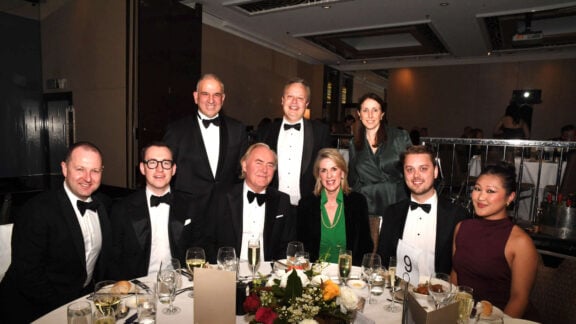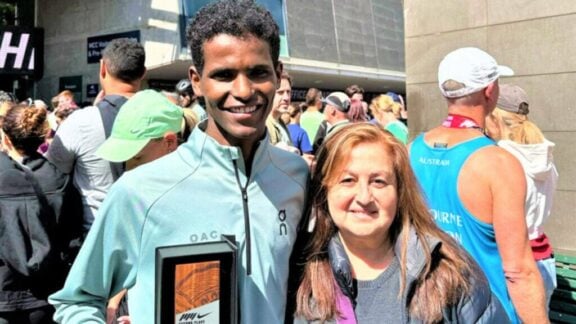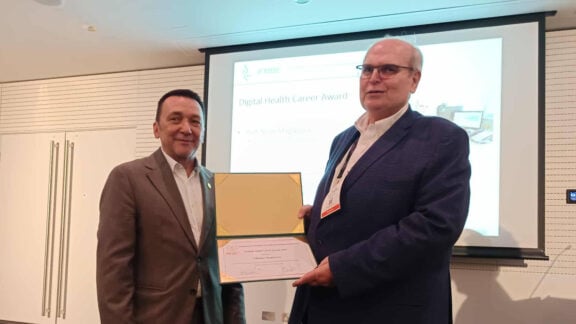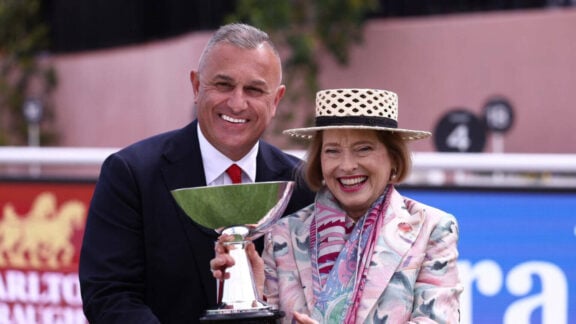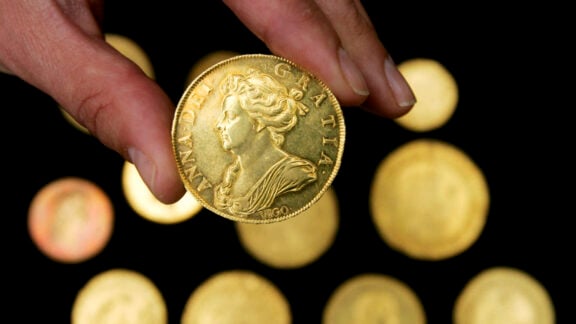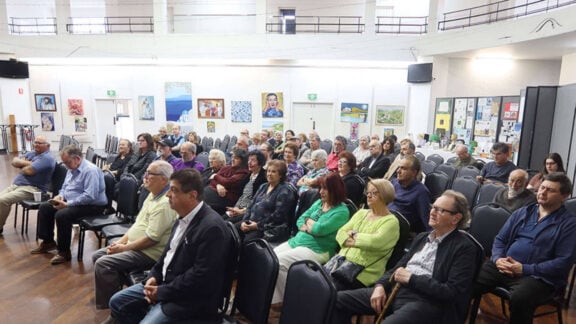In this presentation, I aim to highlight the major events, issues, and developments in the history of the Greek Australian community between 1900 and 1954. It is a broad subject and will necessarily be a brief presentation.
At the start, we need to clarify the difference between community and Community. It is the same in Greek with “koinotita” and “Koinotita”. Community with a capital “C” refers to the organisation, e.g. “The Greek Orthodox Community of Melbourne and Victoria” and “community” with a small “c” to the larger group -the “paroikia”.
After 1895, the Greek communities of Melbourne and Sydney began to stabilize as some women migrated too, and we have a few families and social and cultural life. In general, in 1901 the number of Greek women was very small. It was small throughout the period, even up to 1954. According to Charles Price, in 1901, the ratio was 100 Greek women to 1207.7 Greek men. And in 1947 the ratio was still 287 men to 100 women (Charles A. Price, 1984:8 and 12).
The organised community began in the 1890s with the existence of a number of families and the creation of the first two Greek Orthodox Communities (Melbourne 1897 and Sydney 1898) and the founding of their churches.
1954 is an important turning point as it marks the end of the old pre-war Greek community and the beginning of the new mass migration community. In table 1, in the statistics of the Australian censuses, we can observe the increasing of the Greek community in the first five decades of the 20th century:
We can discern in the history of the Greek Australian community landmarks and periods. Such landmarks are the years 1897-98, 1912, 1916, 1924, 1933, 1954.
We discern periods such as 1895-1916, 1916-1940, 1940-1954.

The years 1895 – 1916
In this period, we have the beginning of the organised Greek life and the establishment of many Greek shops in the major Australian cities. The creation of Greek shops brought chain migration, mainly men from Kythera, Ithaca and Castellorizo. The Greek communities of this early period assisted Greek needs, such as the needs of the Greek Army through fundraisings, especially in the 1912-13 Balkan Wars. 1913, marks the establishment of the first Greek newspaper in Australia – Afstralia, in Melbourne.
The year 1916 is, in many respects, an important milestone in the evolution of the Greek-Australian community. We have information from three different sources about 1916.
1. We have the publication of the book Life in Australia. This was a book about Greeks in Australia, written by George Kentavros and the brothers Kosmas and Damianos Andronikos, financed by the Sydney Kytherian businessman John D. Comino and printed in Melbourne, in the printing facilities of the newspaper Afstralia. This book was translated and re-published in 2009, in both Greek and English, after 93 years, by the Kytherian Association of Australia, Sydney.
2. In 1916 we have a secret census of the Australian Greeks, ordered by the Commonwealth Government, and
3. In 1916 we have also a report in the form of a letter by George Takhmintzis, about the situation of Greeks in Sydney.
Let’s examine the details of this information.

The secret census. Because of World War I, many Australians expressed sentiments against Greeks and Greek shops. They considered Greeks as friends of Germany because of King Constantine’s pro-German attitude. The Federal Security Service ordered a secret census of all Greeks in Australia, their occupations, and their ideological sympathies. Thanks to this census, published by Gilchrist in his book in 1997, we now know the key elements of the 1916 Greek community that complement those in the book Life in Australia. According to Hugh Gilchrist, within a few weeks ‘without attracting attention or suspicion’ the secret census was completed. Of the 2,398 Greek people and their businesses in Australia, who were recorded by the Police in this secret census, only seven were considered ‘pro-German’ and only two had previous convictions and these were ‘for gambling’. The rest were peaceful residents who had never attracted police attention (Gilchrist, Hugh, Vol. II, 1997: 16-19).
The authors of Life in Australia, who wrote it in Greek in 1915, were unaware of the secret census and reported nothing about the violence against Greek shops in Brisbane and Sydney in 1915 and Perth and Kalgoorlie in 1916 (See Gilchrist, 1997:23-28). The book is written from the perspective of successful businessmen and does not illustrate the difficult lives of Greek workers as assistants in their employers’ businesses. The book describes the conditions for doing business in Australia,
praising the hard and honest work of Greek businessmen and the Greek entrepreneurial spirit. Its authors cite biographies, photos and descriptions of the commercial achievements of some 155 Greek businessmen in various Australian cities and country towns.
Among the key players a major mention is given to the financial sponsor of the book, John D. Comino, a native of Kythera, who owned a luxury oyster restaurant in Sydney. He also owned a chain of other restaurants and other assets and is described as the richest Greek of Australia, lifelong honorary president of the Greek Orthodox Community of Sydney, to which he had donated the plot to build the first Greek church in Australia, the Holy Trinity, in 1898. He is presented as a patriarchal figure of Greek businessmen in New South Wales. (Life in Australia, pp. 121-124)
The patriarchal figure of Greek businessmen in Victoria is presented in the person of Antonis Lekatsas or Anthony Lucas, son of a priest from Exogi, Ithaca. He was born in October 1862 and emigrated to Melbourne late in 1886. He owned three luxury restaurants in downtown Melbourne and many other assets. He was a long serving President of the Greek Orthodox Community of Melbourne and Victoria, and in 1916 was the wealthiest Greek in Victoria. He was described in the book as. ‘an old breadwinner and a great entrepreneur of today.’ (p.125) Ten years later Antonis Lekatsas was Australia’s richest Greek. He was appointed Honorary Consul General of Greece in Sydney from 1923 to 1926. In 1931 he was appointed Honorary Consul of Greece in Melbourne and held this post until his death in August 1946. He was generous in aiding charitable causes, Melbourne hospitals and, he created the hospital of Ithaca. In 1943 he donated £5,000 to Winston Churchill for the victims of the recent German bombings in London and £ 5,000 to the then exiled Greek government for the starving children of Greece. (Hellenic Herald, 24/8/1944:4)
In Adelaide (South Australia), the patriarchal figure of Greek businessmen was Dimitrios Polites of Constantinople who ran his business in partnership with his sisterr-in-law, Athena Constantinidou. (pp. 157-58)
In Perth (Western Australia) the patriarchal figure of Greek businessmen was the tobacco manufacturer Petros Michelides. He was born in Castellorizo in 1882 and emigrated to Perth in 1904. (pp. 259-262) In 1916 Michelides was appointed Honorary Consul of Russia and France, in 1923 he was the first elected President of the Greek Orthodox Community of Perth and Western Australia, and later was appointed Honorary Consul of Greece in Perth.

Part I
The leading Greek business people in Australia, in 1916. ( From the book Life in Australia)
Most of the other entrepreneurs presented in Life in Australia in 1916 were relatively young, bachelors, averaging 28-30 years, and averaging about 10-12 years in Australia. They ran restaurants, cafes, hotels, pastry shops, grocery stores, fish shops (fish and chips of old English-style serving fried fish with fried potatoes), or American-style Milk Bar (grocery and pastry shops). The authors are making great efforts to inform young businessmen to develop a proper attitude in their dealings with Australians and Australia. Cleanliness is emphasized in the book and the reader is informed that there is a hefty fine of 20 pounds for the adulteration of milk with water.
These relatively young entrepreneurs came from Kythera, Ithaca and Castellorizo. About 43% of the Greek immigrants of the period, and almost until 1947, came from these three islands. Most Kytherians lived in NSW, most Ithacans lived in Melbourne, and most Castellorizians in Perth. Most of the businessmen presented in the book came from Kythera and had their stores in Sydney and various other NSW towns.
All the businesspeople presented in the book were men, except Athena Konstantinidou in Adelaide and Margaret Wilson in Melbourne, the English wife of Antonios Lekatsas. The book presents these entrepreneurs as “children of poverty, most of them, came to Australia with high and sacred aims”. (p.297) The book highlights success through perseverance and honest work and pride in their Greek ancestry.

These Greek businessmen, according to the book, started poor, from a very low level, and are proud of their “not elegant but honest work”. (p. 96) Many of them, although they had only recently arrived, abandoned their shops, and took the 35-day return journey to join the Greek army during the Balkan wars of 1912-13. The authors write that more than 500 new immigrants returned to Greece in 1912-13 to join the Greek army. (pp. 295-302) This is certainly an exaggerated number because only 25 are listed in the list of those names that returned to Greece, including John Tamvakis who fell in the battle of Kilkis. (p. 295) These young entrepreneurs were also the people who contributed generously to national fundraisings during the Balkan wars.
The book informs the reader that there were 630 Greek shops in Australia at that time, about half of them in Sydney and Melbourne, some in Perth, Brisbane and Adelaide and the rest in various smaller towns. These stores included 14 “kafenia” across Australia. Greek kafenia in the pre-mass immigration period, before 1950, were meeting and information places for the bachelor Greek migrants, but also, in some cases, places containing illegal gambling rooms, unknown to unsuspecting strangers.
The authors inform us that in 1916 there were 170 Greek families in Australia, 2/3 of whom both spouses were Greeks and 1/3 were of mixed marriages. Families in urban areas were scattered throughout the large metropolitan area, making it difficult to set up a Greek afternoon school. Therefore, the authors express their regret that many young Greeks lack knowledge of the Greek language. Australians are described in the book as civilized, friendly and to a certain degree gluttonous, with a fondness for sweets and fruits, which ruin their teeth, something that makes the country’s dentists happy.
The book also mentions other occupations of Greek settlers. There were some hawking traders, peddlers, fishmongers and fish-shop owners. There are references to the two priests, the Father Dimitrios Marinakis of Sydney and Archimandrite Daniel Maravellis of Melbourne, the retired Father Seraphim Phokas from Sydney and the Melbourne medical doctor Constantine Kyriazopoulos. However, there is no mention of the Archimandrite Germanos Heliou and the creation of the first Greek afternoon school in Perth, in 1915. Nor is there a reference to a young medical student in Sydney, George Takhmindtzis, who was to play some role in 1916.

While the book was published in 1916, its writing seems to have begun much earlier. George Kentavros and Kosmas and Damianos Andronikos’ prologues date back to April 1915, which means the book was written even earlier. This may be one of the reasons for not reporting the attacks of soldiers and others on Greek shops in Brisbane and Sydney in 1915, or in Perth, Kalgoorlie, and Boulder in Western Australia in 1916, when Greeks were targeted because of King Constantine’s pro-German feelings. The writers certainly did not know about the secret census of the Greeks in June 1916 but did not even discuss the class differences, the harsh working conditions of the Greek assistant workers who worked in Greek shops (at least 12 hours a day, six days a week, for their stay, board, and some meagre earnings). They do, however, make some reference to the Greeks working in the sugar cane plantations in tropical North Queensland in “cutting sugar cane, a job to which some Greeks begun recently working at” (p. 294); Hugh Gilchrist, however, makes a mention of George Takhimdtzis, a 22-year-old medical student at Sydney University, who in April 1916 wrote a letter to King Constantine, explaining the tragic conditions of workers in Greek shops in Australia. He paints a different picture than that of I Zoi in Australia:
The Greek population here, writes Takhmintzis to King Constantine, may be divided into three groups: the working class, the rich and those who rule. The workers, unfortunate people, are condemned by fate, forced by the other two classes to work many hours a day in hard labour, for low wages- worse off even than the helots of Sparta; and because of this overload, they often fall ill.
Visiting the hospitals, I see people with hernias, kidney displacements, general debility, even venereal disease. Why? Because they have no one to advise them about their rights and about a proper lifestyle. The rich (Greeks) exploiting the situation, receive a good income because of this injustice against the poor. (Gilchrist, 1997:307)
Takhmindtzis asked the King to appoint him as a Greek Consul in Sydney to make the Greek name “beloved, respected and admired”. (Ibid)
Takhmintzis’ letter is even more important than the radical views of a student because it was accompanied by the signatures of 168 Greeks of Sydney. In a way, Tahmindzts, who later became a medical doctor in Sydney, acted as a representative of Sydney’s poor and unhappy Greeks who had been overlooked by the authors of Life in Australia. Takhmindzis in his letter also accuses Sydney Community Priest Father Dimitrios Marinakis of “laziness in the performance of his duties”, that he is primarily concerned with making money and flattering the rich. “The rich are his collaborators and his relatives.” (p. 269) This contrasts with the different picture presented by the authors of the book Life in Australia, in which they refer to Father Marinakis as:
“One of the most modest, good and widely learned members of the clergy of the Greek Orthodox Church abroad. The Reverend Father D. Marinakis is the parish priest of the Greek Orthodox church of Sydney and was born in Alatsata, (Asia Minor). … His inestimable talents have been justly honoured by the Greeks of the church in Sydney, who so greatly respect and love him. (Life in Australia: 116-17).
Father Marinakis remained in his position until 1923 when the Sydney Community asked the Greek Holy Synod to replace him. Despite his protests, Father Marinakis was replaced but he did not leave Sydney. He abandoned the priesthood and with his brother bought the Greek newspaper, Afstralia, which they renamed “National Tribune” (EthnikonVima) and published it weekly in Sydney. There was no response to Takhmintzis’letter and, of course, King Constantine could not respond at that time when the Australians were against him.
Sydney Sydney fell in the battle of Kilkis
The book “Life in Australia” in 1916 was printed in 10,000 copies at a time when the Greek population of Australia was much less than 4,000. Copies were sent to Greece and America. It seems to have been intended to inform people outside the country of the conditions in Australia, to inform the Greek Government of the progress of Australian Hellenism and, while in Greek, to convince the Australian authorities of the law-abiding Greeks and their progressive spirit.
Part II
1916-1940. Expansion, Economic Crisis and Recovery
The Greek-Australian community in its initial stages faced the acute financial problem of maintaining its organisations (churches, schools, associations, etc.) due to the small number of its members. Its leaders made valiant efforts to cope. In Melbourne, the Community Board in 1917 organised the first celebration of the Greek National Day and the few women of the community organised the staging of the play “The Inconsiderate Guest”, written by Melbourne’s first Greek doctor, Constantinos Kyriazopoulos.
The gradual small increase of the Greek population had helped, but not enough, to make community organisations – churches, schools, and newspapers – economically viable and independent. The influx of Asia Minor refugees after 1923 contributed to the creation of new families. In an article in the Melbourne newspaper National Buggle on July 4, 1923, Archimandrite Ireneos Kassimatis remarked that the typical Greek families in Melbourne were newly married couples or older families whose children were past school age. Therefore, it was difficult to maintain a school with viable classes.
According to Michalis Tsounis, at least 8,000 Greeks arrived in Australia in the 1920s and many departed. Over 40% of Greeks left Australia before World War II after staying and seeking their fortune for a few years. This increase in the Greek community was not always welcomed by some segments of the host society, as shown by the Ferry report, in the State of Queensland in 1925:
Socially and economically this type of immigrant (Greek) is a plague to the society in which he settles, and it would be better for the State if his entry was completely forbidden. (Price, 1963, p.205)
Of course, this kind of prejudice thrives on ignorance and misunderstanding as it happened with the 1915-16 riots and looting of Greek shops in Brisbane, Sydney and Kalgourlie, the 1928 bombing of the Acropolis Café in Melbourne and the anti-Italian and anti-Greek, anti-dago riots of January 1934 at Boulder-Kalgourlie in Western Australia. Australians developed a great respect for Greeks after October 1940.

The Church – Communities Dispute in the 1920s
In 1903 the ecclesiastical leadership of Australian Hellenism was transferred from the Patriarchate of Jerusalem to the Church of Greece and in 1924 to the Ecumenical Patriarchate which established the Australian Orthodox Diocese of Australia with Christopher Knitis as the first Metropolitan. In July 1924, Knitis arrived in Australia. This change caused for the next four years a fierce conflict between the new Diocese and certain Community leaders, for a variety of reasons.
Some of these reasons were: a. economic. The Communities were small, had financial difficulties maintaining their churches and were unable to contribute to the maintenance of the Diocese. Actually, the Greek Community of Melbourne was forced to close its small afternoon school in October 1924 because it couldn’t afford to pay the teacher. b. Some Community leaders disapproved of what they considered as the Church system’s authoritarianism. That is to say, the Communities had not been consulted about the upcoming changes. They just received a letter from the Ecumenical Patriarchate informing them that Australia’s spiritual jurisdiction had passed from the Holy Synod of Greece to the Patriarchate, that Australia had become a Diocese, that former Serres Metropolitan Christopher Knitis had been appointed as their new Metropolitan and the Patriarch’s letter ended congratulating them for these developments. (A. M. Tamis, 1997, p.158) c. Some community leaders felt that they contributed to the development of the Communities and did not wish to share community representation with the Metropolitan, (they preferred the continuation of the ecclesiastical leadership of the Church of Greece), d. Localist disputes: the Ithacans and some of the Kytherians were against Knitis. The latter was supported by his Samian compatriots. e. Knittis seems to have had some behaviour problems, acted arbitrarily, was divisive, some of his former friends were turning against him, and part of the press accused him of homosexuality, which at that time was a serious issue.
Knitis clashed with the Archimandrites Irineos Cassimates in Melbourne and Athinagoras Baraklas in Sydney, both of whom he dismissed for anti-disciplinary actions. In Melbourne the majority of the Community Board at that time was held by Samians who were Knitis’compatriots and supporters. In Sydney the majority of the Community Board was held by Kytherians. The Community Board, there, banned Knitis from entering the Holy Trinity Community church, after his clash with Baraclas. Knitis’ friends, including the Consul General of Greece in Sydney, Leonidas Chrysanthopoulos, built Saint Sophia, a new church for him.
Metropolitan Knitis was recalled in April 1926 but in June he was reinstated, after representations of his friends. However, very soon, he lost many of his friends and supporters, including the General Consul of Greece in Sydney, Crysanthopoulos, and the Committee of the Sydney Metropolitan cathedral Saint Sophia, the very church which had been built especially for Knitis and the Metropolis. An accident which occurred to Knitis on 14 December 1927 triggered new negative comments against him. He was hit by a motorcycle while trying to board a tram towards a disrepute destination in Sydney and taken to hospital with head injuries. Shortly before, he had left an engagement party pretending to be ill and was driven home for rest. The Sydney Hellenic Herald referred to the accident demanding again his recall: For God’s sake Holy Fathers of Phanar! If you are not in a position to prevent other calamities, at least don’t allow the smashing of the head of your Church’s Head in Australia. (Hellenic Herald, 29/12/1927)
Knitis was recalled again early in 1928. On 4 February 1928 Patriarch Vasilios cabled him “You are transferred to the ancient Metropolis of Vizyis. Depart for Athens immediately…”. (A. M. Tamis, 1994, p.87) Knitis extended his stay for much longer claiming he did not have the money for his fare to Athens. Eventually, with the assistance of the Greek Government and friends, he departed towards the end of July 1928.
In 1932 Timotheos Evangelinidis was appointed Metropolitan of Australia (1932-1947) and in 1947 Theophylactos Papathanasopoulos (1948-1958). Timotheos and Theophylactos realized that the Metropolis would find it difficult to cope without the cooperation of the Communities, and up to 1958 there was generally cooperation between the Metropolis and the Communities. Papathanasopoulos, however, clashed with the President of the Community of Melbourne in 1947-8, Haralambos Paroulakis, sometimes with the Sydney Community’s Board and before he died at an accident in Melbourne, he acted openly against the Greek Orthodox Communities’ Congress held in Sydney, in 1958.
Facing the economic crisis of the 1920s and 1930s
The Melbourne Community, since 1924, had economic difficulties to maintain the functioning of its church, it closed its school and in 1927 it faced bankruptcy and was re-organised in April 1928. Class division in the Greek community of Australia continued throughout the pre-1940 period. After 1929, there was the Great Economic Depression that plagued the industrialized western countries in recession and unemployment. In the Greek-Australian community, the crisis affected both individuals and community organizations, and the poor suffered greatly. Table 2, gives a picture of the Greek Australian community in the Census of 1933.

According to the Census of 1933 18% of Greeks in Australia were employers, 25% self-employed and the rest workers; 33% were unemployed and 6% underemployed while the Australian unemployment was 25.5% (Tsounis, 1971:203)
Furthermore, 79% earned less than £3 per week, 40% earned only £1 per week or less and 70% were not Australian citizens. Michael Tsounis presents data from the Adelaide Greek Church showing that the average age of people at Greek funerals, between 1925 and 1940, was 41, (20 years less than the Australian average). (Tsounis, 1993: 27)
The innovation by Tavlarides
However, the crisis was not the same for everyone. Many entrepreneurs lost their businesses and employees lost their jobs. Many who were unable to pay their debt payments lost their homes and others were evicted. However, there were some, who using innovation, did quite well. Effy Alexakis and Leonard Yaniiszewski refer to Ioakim Tavlaridis. In November 1932, Tavlaridis, who was also known as Mick Adams, opened at 24 Martin Place in Sydney the “Black and White 4 pence Milk Bar”, the first American style milk bar in Australia selling to standing customers milkshakes and soda drinks. He introduced milkshakes to Australia. On the first day of its opening, Adams’ store served 5,000 customers and about 27,000 a week passed from his shop. (Leonard Janiszewski and Effie Alexaki, 2009, p.195)
In the next four years, thousand others followed, opening in Australia, American style milk bars, most of them Greeks. After 1933, the Greek shops that survived the Great Depression started improving slowly.

Part III
Pre-WWII Greek regional and political Associations
Between 1916 and 1940, despite the financial difficulties, many Greek regional associations, fraternities and other political and sports organizations were created in the Greek-Australian community that reflected the expansion and diversity of the Greek-Australian community. To the older associations of Ithacans, the “Orpheus”, the Castellorizians, the Kytherians, new ones were added: Macedonians, Samians, Asia minors, Cypriots and others.
In 1935 the Democritos Workers’ League was created in Melbourne, a largely left-leaning organisation aimed at becoming the political and cultural association of Greek workers in Melbourne and Victoria. It was followed by the “Atlas” in Sydney in 1939 and later by similar organizations in 2-3 other Australian cities.
The Greek left in the pre-1940 community were not numerous but active in trade unions and community life. These organizations did not aim to represent the expatriates of a geographical region or a particular political party but aimed to address the political and cultural needs of the Greek migrant workers and sought to attract members from the working class and small business of the community. They maintained links with other Australian working groups and trade unions and sought, with their newsletters and their political and cultural activities to provide lonely and isolated workers with language assistance, alternative entertainment opportunities, political events, and advice for avoiding gambling. They also provided workers with information about Australia and their rights at their workplaces.
These workers’ associations supported the activities of the Communities concerning churches and afternoon school but were against the exploitation of the workers. This brought them into conflict with Greek employers. The writer Alekos Doukas in his novel Under Foreign Skies presents the experiences and feelings of Stratis, the main character of his novel, for his employer, for his exploitation by him while he was desperately trying to keep his job at his employer’s shop, in the early 1930s. Doukas in the same novel refers to an anonymous Greek trade unionist who tried to organize restaurant workers in Sydney and attracted the hostility of the Greek employers who reported him to the police as a troublemaker and anarchist. The police were constantly monitoring his movements, never arresting, or interrogating him, to break his nerves. The unionist was led to the suicide. Dimitris Kalomiris, a Greek-Australian journalist, in an interview in 1989, confirmed that the trade unionist referred to by Doukas was a real person. Doukas’ anonymous trade unionist was Andreas Raftopoulos, a migrant unionist from Ithaca who committed suicide in Sydney in 1941. Raftopoulos’ wife and two children lived in Greece. Toward the end of the 1930s, Raftopoulos became an organizer of the Restaurant Workers’ Union and was also a founding member of the Sydney “Atlas” Association in 1939.
The case of Andreas Raftopoulos shows the intra-community class tensions of the period. A. Raftopoulos and G. Mitsopoulos were members of the Communist Party of Australia (CPA) which in 1940 was made illegal by the Menzies Government. Mitsopoulos was accused of distributing anti-war leaflets, convicted, and was interned at a concentration camp together with German and Italian fascist internees, after Alexander Grivas and officials of the Greek Consulate testified against him.
Grivas probably testified against Mitsopoulos because the Mitsopoulos group, through an employee of Grivas, planted anti-war leaflets in copies of the Hellenic Herald newspaper. If the Police had found out, Grivas would probably have lost his newspaper publishing license. Few non-English-language newspapers were licensed at that time. The license was issued by the Police and if he had lost it, it would have been impossible to get a new one. The CPA was until 1941 against the War because the Soviet Union was also against the War.
In Melbourne, members of the Democritos, in 1939, booed the Greek Consul General Aimilios Vryzakis, Metaxas and King George II in the Orpheus’ Hall, at an event for King George II’s name day. This triggered a long-standing communal split, in many cases hatred, in Melbourne, between right-wing conservatives and the left that continued for many decades, almost until 1981.
Much of the structure of the Greek community in Australia had already been formed by 1940. The Communities, the Metropolis, the Consulates, the newspapers, the afternoon community schools (one in each major city), regional fraternities, cultural, sports and political organizations had been created in the 1910s, 1920s and 1930s.
In the 1930s there were three weekly Greek-language newspapers in Australia, two in Sydney “National Tribune”(Ethnikon Vima) and “Hellenic Harald” (Panellenios Kyrix) and one in Melbourne, “Phos” (The Light). All three newspapers were conservative.

1940-1950. The War years and the early post-War community
In the 1930s the Communities in Australia were orgnising annual Grecian Balls, aiming to invite Australian dignitaries and build a good name for the Greek-Australian community. After 28 October 1940 the Australians developed admiration and great respect for the Greeks. The war years, with about one million American soldiers passing from Australia between 1942 and 1945, the Australian economy accelerated and so did the Greek food industry, cafes, restaurants, milk bars, etc. The Greek businessmen did very well during the war years. They also contributed to changing Australia from a British type eating shops to American style shops and changing the British with an American eating culture.
In the second part of the 1940s, due to the shortage of ships due to the previous war, there was no significant migration from Greece to Australia. The main move was the reunification of families with their members who had been cut off during the war in Greece. In the 1947 census Greek immigrants to Australia amounted to 12,291. Certainly, they would have been a little more if the Census had included persons of second-generation, Greek Cypriots and Greek immigrants from other countries.
Mass Migration after 1953
In 1952 a Migration Agreement was discussed between Australia and Greece and in 1953 the two countries exchanged Ambassadors. Mass immigration began immediately.
The table 1 (see further up) shows the increasing numbers of the Greek community in Australia, between 1901 and 1954. We notice that even in 1954 the number of women was much smaller compared to those of men, but the total number of people had more than doubled between 1947 and 1954.

Differences between pre-War and post-1953 immigration
The largest migration from Greece to Australia occurred between 1952 and 1971. According to the Australian Bureau of Statistics in 1947 the number of Greece-born residents in Australia was 12,291, in 1954 it was 25,862. in 1961 Greeks numbered 77,333 and in 1971 they reached 160,200, the highest point.
The community infrastructure – Communities, churches, schools, organizations and fraternities formed before the war, now went through a period of dramatic expansion. The young immigrants who left Greece for economic reasons, unlike the pre-war workers working in Greek small enterprises, had to work as factory workers, mainly in Melbourne, Sydney, and Adelaide. However, there were also many who left for political reasons – due to persecution and discrimination. And there were others who left for social reasons: men who otherwise could not have a family if their sisters did not get married first, or young women who, due to lack of dowry, could not find prospective husbands. Many of these young women were forced by circumstances to emigrate with the so-called ships of “brides” to Australia to marry their husbands in arranged marriages.
Most of the Greek immigrants of the period were from agricultural villages, without any technical or vocational training and had little knowledge of English. They knew nothing about Australia and the Australian system. They were usually young men and women from the Greek countryside, often feeling lonely in a foreign environment. The Sydney National Tribune of March 25, 1953, hosted statements by the newly appointed first Greek Ambassador to Australia, Dimitrios Lambros, who apparently echoing Greek official policy spoke of “large-scale immigration on the basis of a plan”. The problem, as it turned out, was that there was an official “migration plan” – exportation of excess people – but no plan or concern for the problems that would encounter. The largest number of new immigrants settled in Melbourne.
The intentions of most Greek migrants were to return home after 5-8 years. Of the pre-war immigrants around 37% and of those of the mass immigration around 34% returned, “When the children were still young”, as the phrase at the time was. The majority, however, found it difficult.
1954, then, marks a dividing line between the older and the new Greek community -Paroikia. The structure of the institutions was formed during the pre-war years but the large paroikia was formed after 1954.
Mass immigration radically changed the occupations structure of the pre-war community. According to Price, in 1947, the 58% of the Greek-born in Australia were employers or self-employed. 43% of Greeks lived outside the major capital centers, in country towns where their shops were located or worked in the shops of their compatriots. (Price, 1991, p. 157) In 1971, in a community more than 13 times larger than in 1947, the percentage of employers and self-employed was only 17%. The rest were industrial workers and employees. Only 7% of the members of the Greek community lived in 1971 outside the large capital city centers.
Bibliography
Burke J. B., “Greek Newspapers in Australia”, in Ata, A. W and Ryan Collin, (eds), The Ethnic Press in Australia, Academic Press and Footprint Publications, Melbourne, 1989: 222-247.
Castan Con, The Greeks of Brisbane, Brisbane, 2013.
Fifis, C. N., “The Pre-World War II Greek community in Australia. Class, Divisions and Trends”, Journal of the Hellenic Diaspora, 30 (2), pp. 57-83, USA, 2004
Navigating through the Generations. A History of the Greek Orthodox Community of Melbourne and Victoria, 1897 – 2008. Unpublished Ph. D. Thesis, La Trobe University, 2009.
Από τους καθ’ ημάς Αντίποδες. ΄Οψεις της ιστορίας της Ελληνοαυστραλιανής Παροικίας, Σ. Ι. Ζαχαρόπουλος, Αθήνα, 2015.
Η Πρώτη Ελληνική Κοινότητα της Αυστραλίας. Ιστορία της Ελληνικής Ορθόδοξης Κοινότητας Μελβούρνης και Βικτόριας, 1897-2018, Σ. Ι. Ζαχαρόπουλος, Αθήνα, 2018.
Gilchrist Hugh. Australians and Greeks. The Early Years, Halstead Press, NSW, Sydney, 1992
Australians and Greeks. The Middle Years, Halstead Press, NSW, Sydney, 1997
Australians and Greeks. The Later Years, Halstead Press, NSW, Sydney, 2004
Kanarakis George, Greek Voices in Australia, Australian National University Press, 1987.
Ο Ελληνικός Τύπος στους Αντίποδες, Αυστραλία και Νέα Ζηλανδία. Εκδόσεις Γρηγόρη, Αθήνα, 2000.
In the Wake of Odysseus. Portraits of Greek Settlers in Australia, RMIT University Publishing, Melbourne, 1997.
Kapardis, A and A. M. Tamis, (eds) Afstraliotes Hellenes, Greeks in Australia, River Seine Publications, Melbourne, 1988.
Κένταυρος Γ., Κοσμάς και Εμμανουήλ Ανδρόνικος, Η Ζωή εν Αυστραλία, Σίδνεϊ, Τύποις Αυστραλίας, 1916, (Επανέκδοση 2009).
Κουρμπέτης, Σ, Η Ιστορία της Ελληνικής Αριστεράς, 1915-1955, Εωθινόν, Μελβούρνη, 1992.
Περιοδικό Παρουσία, Αφιέρωμα στην ‘Ελληνική Παροικία της Αυστραλίας,, αρ. 50, Οκτώβριος – Δεκέμβριος 2009, Αθήνα.
Price, C. A. Greeks in Australia, ANU Press, Canberra, 1975
Birthplace of the Australian Population, 1861-1981, ANU Press, 1984.
(ed.) Australian National Identity, The Academy of Social Sciences in Australia, 1991.
Tamis A. M. Immigration and Settlement of Greek Macedonians in Australia, La Trobe University Press, 1994, Melbourne
An Illustrated History of the Greeks in Australia, Dardalis Archives, La Trobe University, 1997.
Tsounis Michael, “Greek communities in Australia”, in C. A. Price (ed.) Greeks in Australia, pp.18-71, 1975
“The History of Australia’s Greeks: Some signposts and Issues”, in A. Kapardis and A. M. Tamis, (eds) Afstraliotes Hellenes, Greeks in Australia, River Seine Publications, Melbourne, 1988.
“Greek community, Paroikia, Formations in Australia:1880s-1980s”, in Greeks in English Speaking Countries, Hellenic Studies Forum, Melbourne, 1993.
Yiannakis J., Perth’s Castellorizian Connection 1890-1990″, in Greeks in English Speaking Countries, Hellenic Studies Forum, Melbourne, 1993.
Zaniszewski Leonard and Effy Alexakis, «Το Αυστραλοελληνικό καφέ: ΄Ενας ‘Δούρειος ‘Ιππος’ για την Αμερικανοποίηση της Αυστραλίας», Παρουσία, Αφιέρωμα ‘Ελληνική Παροικία της Αυστραλίας,, αρ. 50, Οκτώβριος – Δεκέμβριος 2009, Αθήνα.
Dr Christos N. Fifis is an Honorary Research Associate in the Department of Languages and Cultures, La Trobe University

